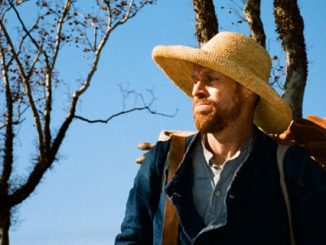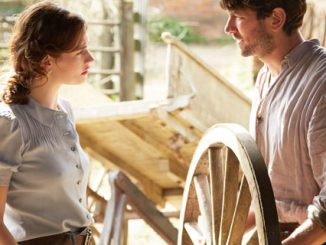
Two movies all about the drug trade, one a dazzling origin story, the other a thinly disguised ad for cannabis.
Top pick: Birds of Passage
“It was savage capitalism, not drugs, that destroyed the traditional way of life for many Columbians,” claims the co-director of the fascinating new film Bird of Passage. But really? Can the two ever be separated? It’s a statement that seems to be echoing the naivety of a generation of youthful hippies, circa 1968. (Drugs: good. Capitalism: bad…) and yep, I was part of all that, still at high school and convinced that the use of drugs, and particularly cannabis and LSD, was somehow “sticking it to the man” – a rebellious anti-capitalist act. It’s almost painful to recall that now – now that legalisation and the mainstream commodification of drug use is a major driver of so many advanced economies. We were blind to the way capitalism actually works, but forgive us… We were only the age Greta Thunberg is now.
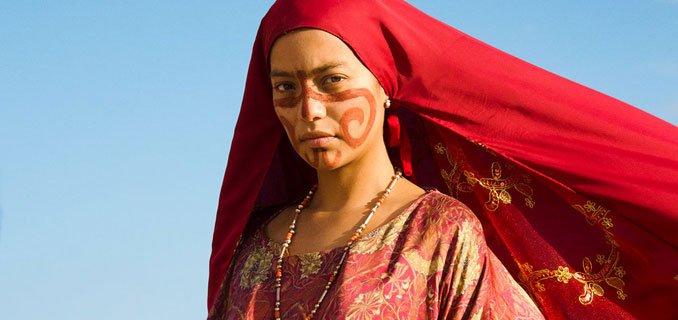
Christina Gallego and Ciro Guerra are the husband and wife team (now separated) who made 2014’s astonishing and hallucinatory Embrace of the Serpent, and their latest film is just as spectacularly epic. It’s set over three decades, from the early 60s through to the 90s, and it follows the degradation of tribal Indian society in Columbia from the times when its tight-knit clans tended their goats and traded textiles through two decades of riches and escalating violence as the drug trade took over. Its opening is hypnotic, showing a young woman, Zaida (Natalia Reyes) performing a bird-like dance with flowing red robes announcing her progress into womanhood. A suitor, a man called Rapayet (José Acosta) joins her in the courtship ritual, only he doesn’t have enough money for the dowery demanded by the village matriarch Úrsula (Carmiña Martínez). A bit later though he and his friend Moisés (Jhon Narváez) stumble on a plan to get the funds by selling some marijuana to some US Peace Corps kids who have come to Colombia to preach the virtues of capitalism over communism. That irony is delicious. It didn’t take long for Rapayet and the clan to realise what the gringos really wanted – and in a few short years an industry shipping dope to the seemingly insatiable American market had developed. “Weed is the key to happiness,” observes Moises, watching the stoned young Americans that first time. “Their happiness,” answers Rapayet, with glum, uncanny foresight of the tragedy that would follow.
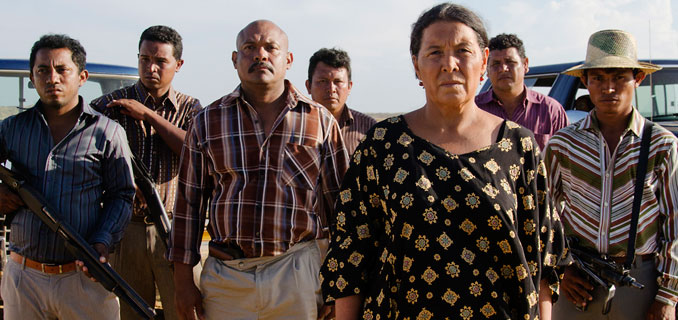
There are numerous echoes of The Godfather, and even Breaking Bad in showing the way the drug trade destroys the old ways of doing things, breaking the bonds that preserve family ties and civilised values. It starts slowly, a little deception, a pointless murder, then escalating levels of pride and avarice that are eventually accompanied by shocking violence. Birds of Passage also gives us fascinating look at a tribal culture that once used “word messengers” as middlemen to broker peace and settle disputes – just one of the traditions that are desecrated. The performances are all superb, and the exotic and atmospheric landscapes are dazzling. And the final scene, set in the eerie glistening white fortified mansion Rapayet and Zaida built, standing where a noble ancient village once stood, is just heartbreaking. MA15+ from Oct 3 Local cinemas include Palace Norton Street, Central and Dendy Newtown. ★★★★
Green Light
Ned Donohue’s film documenting the daily lives of two men who supply medicinal cannabis, is a curious affair. The pair seem to operate in the Northern Rivers region of NSW (it’s never specified), but we see them driving around in lush green countryside taking phone calls and telling us how much they care for the patients they visit and supply. Since they’re selling a “natural product,” everyone appears to live in beautiful places overflowing with sub tropical foliage. There’s so much green I’ll swear an advertising creative director chose the sets. They visit a man with a disfiguring growth on his face, a kid with something horribly serious and his grateful mum, and someone who once had cancer. Then a horse on a picture-book perfect Byron Bay hinterland farm with a mole on his nose. Although careful not to claim anyone is miraculously cured (maybe the horse?) – Green Light implies that they will be – provided they keep buying the goods. Now if only that skeptical medical establishment and its obstructive need for peer-reviewed data and empirical evidence would get out of the way!
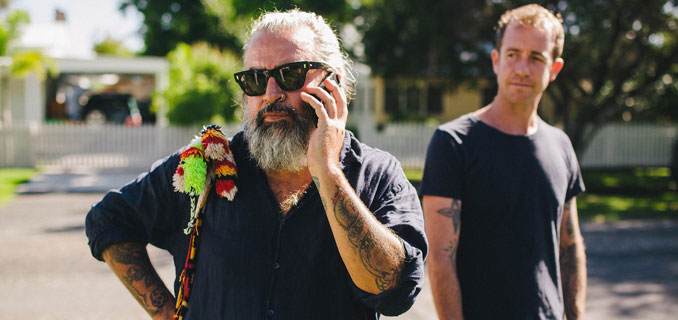
Needless to say, nothing is put to any test, nor is any contrary opinion on the effectiveness of medicinal cannabis offered. There’s plenty of negative and non-decisive evidence around, but none of that is mentioned at all, and no journalistic rigour applied to anything anyone claims. The pair’s saint-like mission statements – which both repeat several times – are taken at face value. It’s assumed the audience is already aboard the cannabis bandwagon, and no doubt they will be. In fact you’d be forgiven for thinking this is less a real doco, more a glowing product advertorial. Maybe it is. One of the men, Luke, wears a T-shirt branded with a company logo in the later scenes, a local cannabis supplier who (when I checked its website) offers “free delivery” to its Australian customers. I won’t name the company – they’re not paying me.

Both men also had a past involvement in illegal drugs, and their progress to their present roles as self-proclaimed healers motivated only by altruism could be an interesting subject – for another film… They do occasionally fret about the current black market status of their chosen trade though, and at one stage Luke (he’s the one with the neat haircut) stages a mini panic attack when he spots a police car. The scene hits a spectacularly false note – he’s driving a late model Subaru Outback, a car only suburban dads and boring retired boomers like me drive, hardly a cop magnet. All he has to do is roll down his sleeves to cover the tats and keep his hands off his mobile phone while driving, and he’s fine. But if he’s really worried about unwanted attention, why is he in this film?
In the US and Canada, the medicinal cannabis promotional push Green Light is part of was the precursor to full recreational legalisation – a process that is now pretty well complete. All the Democratic Presidential candidates (with the possible exception of a luke-warm Joe Biden) are now backing the industry. And why not? There are billions to be made, in the US Big Cannabis is now as entrenched on Wall Street as it is on local Chambers of Commerce – well on its way to being an establishment industry at the centre of many US State’s fiscal health. And after its now inevitable legalisation here, the path bizarrely being pushed by the anti-big business Greens – it’s likely to develop the same financial stranglehold over our treasuries that the coal, alcohol and gambling industries have now. And hasn’t that turned out well for us… CTC limited sessions at Dendy Newtown (including a Q&A with the director and a “cannabis expert”) from Oct 8. ★1/2 (for the art direction).
Also opening: Joker
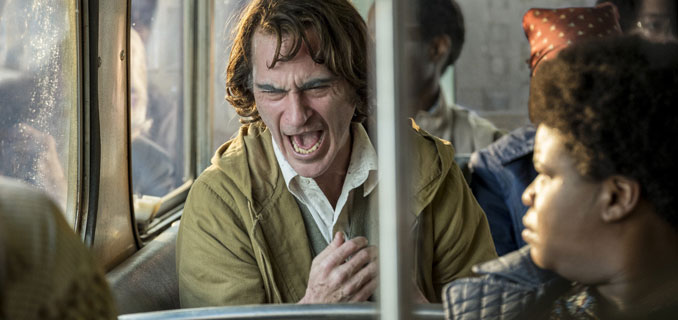
Even those who normally run a mile from comic-book movies may be tempted into checking out Joaquin Phoenix’s incredible blood-curdling performance in Todd Phillips’ Joker, one no doubt destined for an Oscar nomination. And fair enough, if you only see one movie in your entire life about a homicidal maniac in a clown suit (and I don’t recommend more than one), it really should star Joaquin Phoenix. He just can’t help himself, he’s the most menacing and best unhinged actor in the world, though his intensity here is a bit overpowering. He’s in every scene, and it’s just too much.
Make no mistake though – Joker is like no other comic book movie ever. It’s already won the Golden Lion earlier this month, the top prize at the Venice Film Festival, and is set in the New York of Taxi Driver, back when things were “all getting a bit crazier” – not the spick and span city gentrified city it is today. Bruce Wayne (later Batman) is still a young boy (only glimpsed in two very short scenes) and Gotham is at its lowest ebb – a time when garbage bags piled up uncollected and giant rats ruled its sleazy graffitti-ridden streets.
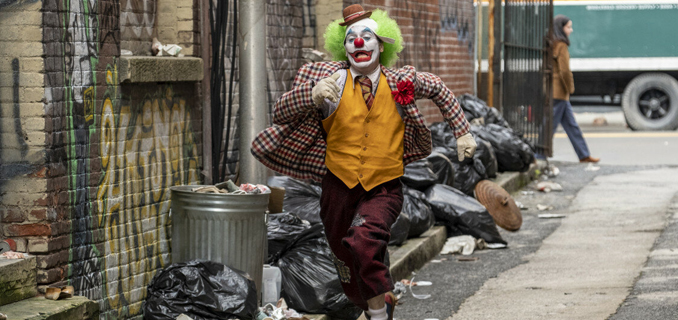
This is the time (1976) I first visited New York, and I vividly recall that very same decay and despair, the edginess and nagging fear that the whole fabric of civilised life was unravelling right before our eyes. Joker exaggerates that, of course – it’s a comic book, but its look and feel is accurate. People and businesses were giving up on New York, and it was widely assumed the city was doomed. Many reviewers see issues in the movie that touch on the present-day – for this is indeed our familiar nightmare world in which billionaires control everything and the rest of the population is getting poorer and angrier. But nothing happening today can quite match those dismal years when capitalism’s greatest city (Gotham) was on its knees. That’s the reason to see Joker – for its art direction, set design and stunning atmospherics. They take us back to a time in our recent history when, believe it or not, conditions were far worse than they are now, even in the days of Trump. I know we’re supposed to believe that the End Days are yet to come. But as Joker shows, we’ve seen them. And moved on… MA15+ from Oct 3. Palace Norton Street, Central, Dendy Newtown and everywhere else. ★★★★
Reviews – Russell Edwards

